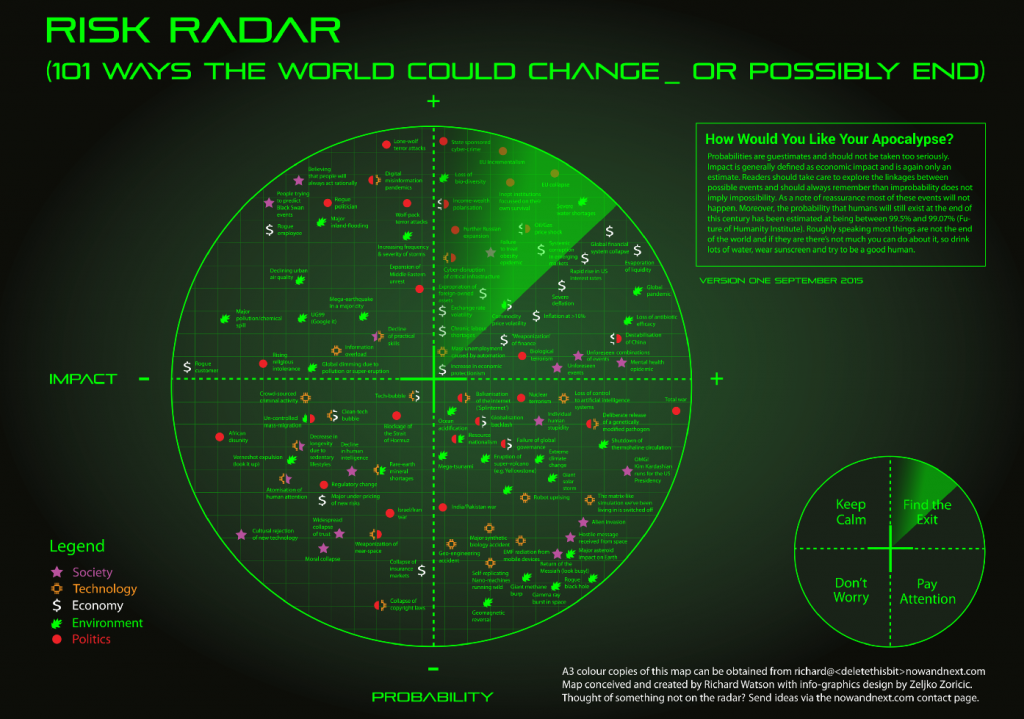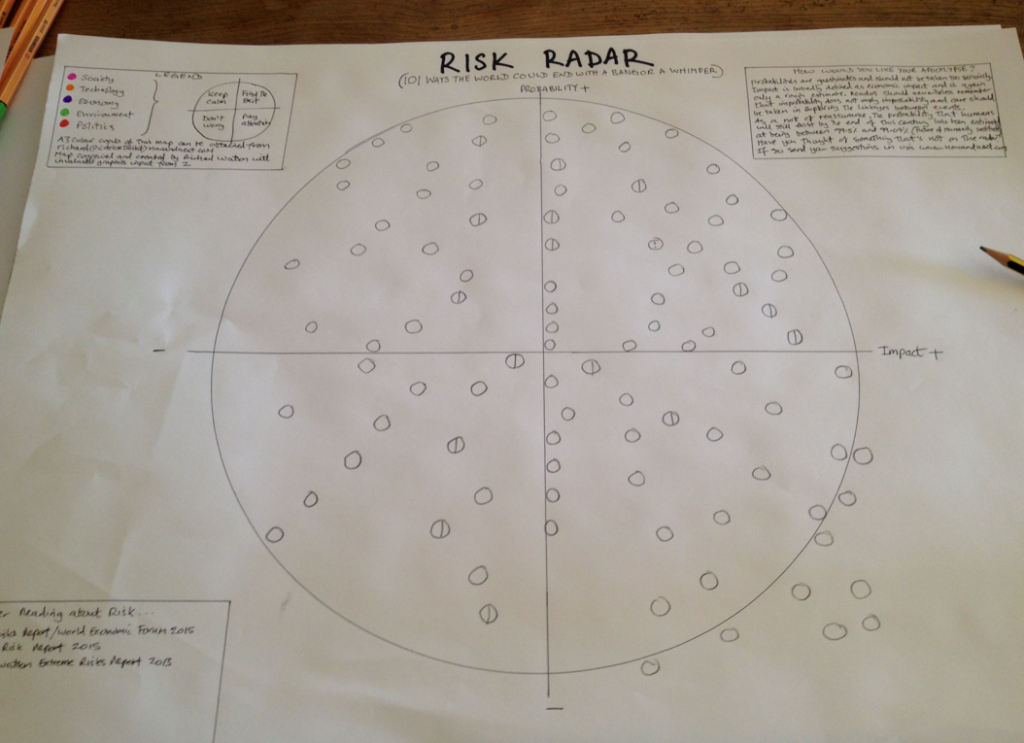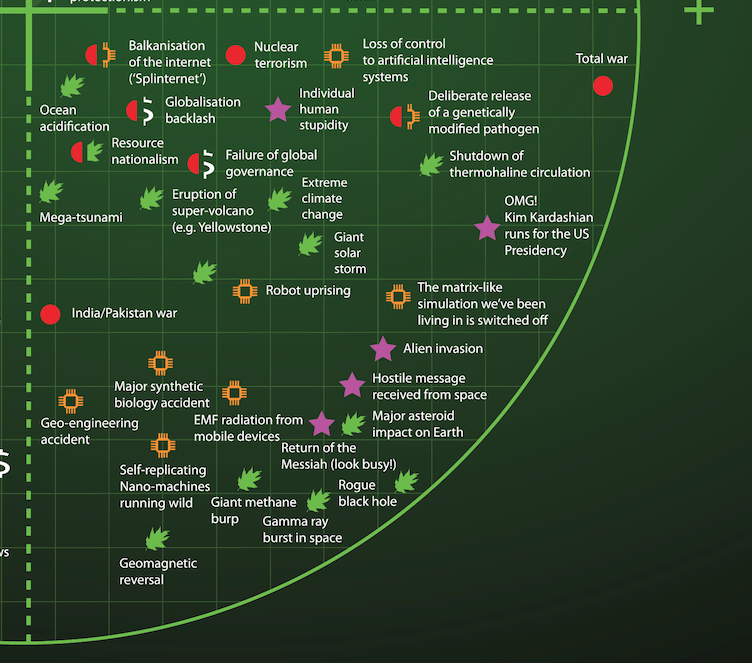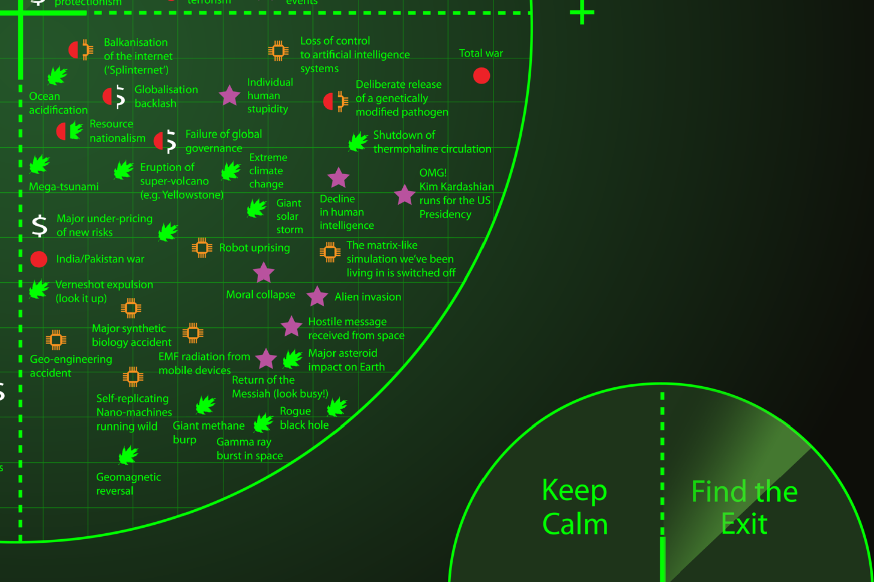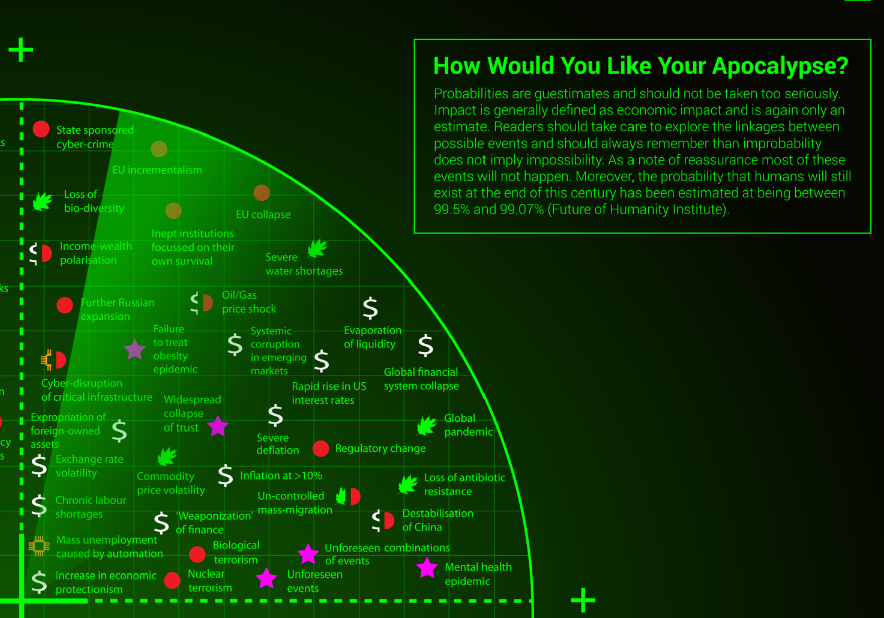So here, once again, is the finished version of my new map of global risks (plus a few charming ways the world could end). The radar is obviously divided into four by impact and probability. Impact is a guess at economic impact, while probability is a guess at likelihood. I know some people will argue about where specific events are located, but that’s the whole point – to created argument and debate about potential risks. The most serious events are be located top right, the least serious bottom left, although personally I’ve always had an interest in low probability high impact events (the so-called wildcards in scenario planning speak). These can be found bottom left. On the whole the map is serious, but there are a few events that aren’t – purely to keep people amused and awake.
In terms of process, a list of risks was generated using desk research. Sources include the World Economic Forum Global Risks Report, The Towers Watson Extreme Risks report, the EY Risk Report and various other publications along with material developed in various workshops at London Business School.
What do I worry about?
Apart from the next map, my biggest worry for a high impact event is another global financial meltdown (far worse than last time due to increased debt levels, a lack of liquidity and the newly networked nature of fear). This could be triggered by rising US interest rates, although the actual trigger is irrelevant. There is so much stress built up in the system I believe almost anything could trigger a panic sell off. I suspect that QE won’t work again either, although one might argue that QE is itself a risk and should be on the map.
I’m also concerned by a couple of other things on the map, but I’m not going to draw further attention to these. Water is an issue globally, although I’m writing this in the middle of an English rainstorm. Income polarisation worries me too.
Is there anything I’d like to happen? A message from space would be wonderful, although perhaps not a hostile one. A globalisation backlash could have benefits, although I suspect that the associated nationalism and tribalism wouldn’t be pleasant. Any favourites? Got to be human stupidity and Kim Kardashian!
Recommended listening while looking at the radar is, of course, Golden Earring’s Radar Love (1973 version here).
So to sum up, as it says on the map, most things here won’t happen so drinks lots of water, apply sunscreen and try to be a good human for future generations. Thank you.

